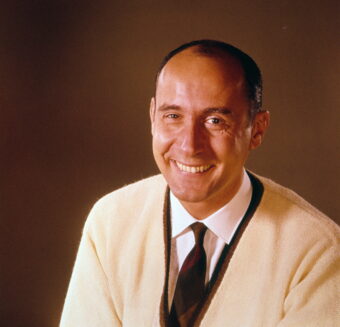Whenever people write about the Rolling Stones, they inevitably feel obligated to make some kind of predictable joke about how the Stones are ancient, and how they recorded their first single, “Come On,” during the Woodrow Wilson administration, and how Charlie Watts now resembles Jack Kevorkian’s younger brother. This was already the case in December 1989, when Mick Jagger was on the cover of Spin during the Steel Wheels tour; even then, the Stones seemed like five guys who should’ve been three-fifths dead. Yet if Steel Wheels had somehow been the Rolling Stones’ debut album, and this had actually been the 1989 Next Big Things issue, then the Rolling Stones would’ve been embarking on a career longer than Pearl Jam’s.
I recently read an interview with Jagger from ’72, when he was promoting Exile on Main St. He was asked about how he would compete with the new class of teen heartthrobs. As far as I can tell, the Rolling Stones have never been young. I bet people were asking if they were going to retire following Aftermath.
The ’89 Spin story was penned by a writer named Lisa Robinson, and it has a very clear thesis: This writer is close personal friends with the Rolling Stones. Within the first 500 words, Robinson mentions that she (a) has spent almost two decades “sparring” with Jagger, (b) has been regularly invited to Jerry Hall’s baby showers, and (c) was the only journalist who deceased Stones road manager Ian Stewart truly trusted (perhaps because she never wrote any scathing reviews for Baby Shower Quarterly). Like many Spin features from the pre-Clinton era, it’s almost consciously unfocused, periodically jumping between ’89 shows and a 1975 tour. The strangest insight comes from an Evian-drinking Jagger, who says, “I train pretty hard and try to stay in shape; it’s just like being on the tennis circuit without the coke.” Which is to suggest, I guess, that professional tennis players do more coke than rock stars. Sadly, there is no supportive quote from Ivan Lendl.
Also within the pages of this fine issue: introductory features on a fresh-faced band called Skid Row and a furry young band called Soundgarden. The latter is described by the always droll Mark Lanegan (then of Screaming Trees) as “four guys who wear clothes,” arguably the most accurate summation of any group in music history. This being 1989, the band members are forced to spend part of the interview telling us why they are not influenced by Led Zeppelin. The piece also includes some of the first mainstream references to the “Seattle Sound,” a genre that Soundgarden guitarist Kim Thayil immediately discounts. “What gets called the ‘Seattle Sound’ should really be called the ‘Sub Pop Sound,'” he says. “Sir Mix-A-Lot just went platinum. Robert Cray and Heart sell millions of records. None of those bands are considered the Seattle Sound, but bands like Cat Butt, Nirvana, the Fluid, and Tad are. It’s that grungy stuff, you know, heavy muddle — that’s the Seattle Sound.”
Obviously, time has proven Thayil’s insights prescient, as rock music — and alternative culture as a whole — was about to be completely reinvented by the music of Cat Butt.
The aforementioned Skid Row story is less revealing; it’s part of that tradition of rock writing in which the journalist spends 2,000 words making sure everyone realizes how much he hates the band he’s pretending to cover. It ends with the Skid’s Dave Sabo leaving to play golf, which is supposed to illustrate why “Youth Gone Wild” is an inauthentic depiction of teenage rebellion. This somewhat contradicts the ethos implied by the rest of the issue — I mean, didn’t this dude read that Rolling Stones cover story? If tennis players were all cokeheads, golfers were probably doing ice. Do you remember ice? This is what we called crystal meth in 1989, and it’s described on page 37 as being “worse than crack. It’s a new form of speed that throws your brain off the chart.” Then-drug czar (and future gambling addict) William J. Bennett warned that “smokable methamphetamine will be the drug plague of the 1990s.” It turns out he was right, which was bad news for impoverished Midwestern teenagers and good news for dentists in rural Iowa. But what could you really expect from an entire generation of Cat Butt fanatics?




